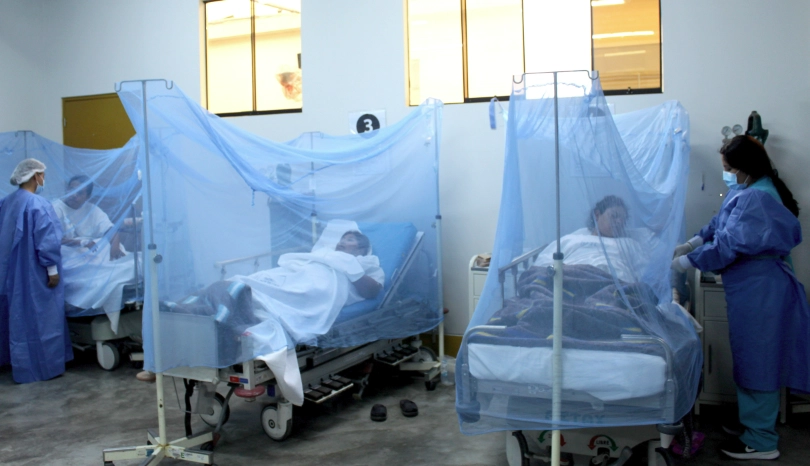From Colombia to Chile, Bolivia and Paraguay –not even Uruguay, with its temperate climate, is spared. Every day, cases of vector-borne diseases make the news. The year 2023 closed with the announcement of human cases of Oropouche and Mayaro fever in Brazil and western equine encephalitis in Argentina. In numbers, these cases do not compare with more common diseases such as dengue fever, a disease caused by dengue virus that this year has broken infection records in the region. But, with climate and environmental changes, the epidemic vocation of these three diseases is growing: they can be transmitted to more people and reach countries where they were not found before.
These are three zoonotic viruses; that is, their life cycle is spent in nature infecting non-human mammals until they are transmitted to human populations, usually by insects. The most recent outbreaks or unusual increases of Mayaro and Oropouche were reported in ten cities in the Brazilian state of Acre, in the middle of the Amazon. This is no mere coincidence. Oropouche virus has been detected in humans in places where vegetation cover is progressively decreasing and Acre has lost a significant part of its forests in recent years. Between 2002 and 2022, 1.57 million hectares disappeared, or 11% of its tree cover.
Deforestation is often accompanied by illegal mining and unplanned urbanization, which create ideal conditions for the proliferation of insects in or near inhabited areas. Water soaks into eroded soils, abandoned tires and makeshift dwellings, and it only takes a specific range of temperature and rainfall for virus-transmitting insects to reproduce exponentially in just one week. Once they proliferate, the probability increases that dipterans (two-winged insects) that transmit the Oropouche, Mayaro and equine encephalitis viruses will infect people.
According to the different possible scenarios related to climatic and environmental changes in the region, if there is an inadequate response in terms of planning, prevention and control, experts agree that vector-borne viruses may become increasingly important public health problems.
Impacts on the State
The accelerated transmission of any infectious disease has a negative impact on a country’s health and economic systems. As a reference, with an incidence between three and four million confirmed cases per year, dengue costs Latin American governments around 3 billion dollars annually.
Because of their epidemic potential, Mayaro, Oropouche, and equine encephalitis are viruses considered of relevance by the Pan American Health Organization. Laboratory diagnosis of Oropouche, Mayaro, and equine encephalitis is not routinely performed, making it difficult to predict from and to which country they may spread at any given time. The symptoms of these infectious diseases can be confused and, therefore, can coexist undetected.
Despite the need to prevent and control the transmission of these viruses, their risks receive insufficient attention from central and local governments. Camino Verde, a community-based intervention in Mexico and Nicaragua significantly reduced dengue cases, implying that dengue control integrated into the primary health care system could have an effect. The problem is that health facilities in our region are too busy with the daily demands of the population and their attention is focused on more serious or higher-incidence diseases, such as dengue itself or yellow fever. Effective vector control and the expansion of diagnostic capacity in health systems require providing them with additional human and physical resources.
Even if more investments were made in the health sector in the countries of the region, it would not be able to cope alone with the consequences of neglect in other areas of public management, such as the provision and safe management of drinking water, sanitation and garbage collection, and management, which are the most direct solutions to any vector-borne infectious disease. Similarly, just as governments create incentives and protection mechanisms for industry and the business sector, it becomes pertinent for them to declare the proliferation of vector-borne viruses as a priority area of government investment. In the face of forest loss, environmental ministries could create more and better incentives to combat the active fronts of illegal deforestation or mining. To control land trafficking for housing, federal and central governments should at a minimum require and support effective management of urban sprawl in cities; ideally, they should actively fight organized crime.
In the absence of direct interventions to control the proliferation of mosquitoes and other dipterans, known and unknown fevers will continue to affect human populations. Governments should, in parallel, identify the infectious diseases that are of relevance in the region, continue to increase the provision of basic services, and expand the actions of other sectors that have influence in areas of relevance for vector proliferation.













